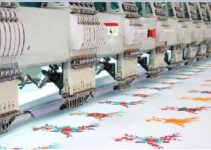Sustainable manufacturing is a growing trend these days.
Consumers are looking to buy from ethically minded businesses. That’s why it’s important now more than ever to get set up with sustainable manufacturing.
Page Contents
Why is Sustainable Manufacturing so Popular Nowadays?

Source: unsplash.com
Sustainable manufacturing has been around for quite a while, but it seems to have become more popular in recent years. Why is this? There are a few reasons.
For one, sustainable manufacturing is good for the environment. Manufacturers who adopt sustainable practices can reduce their carbon footprint and help preserve our planet. In addition, sustainable manufacturing can also save money in the long run. Many sustainable practices actually improve efficiency and reduce waste, leading to lower production costs.
Finally, sustainable manufacturing is becoming more popular because consumers are increasingly interested in buying environmentally friendly products. More and more people are looking for ways to reduce their impact on the planet, and sustainable products fit that bill. As a result, sustainable manufacturing is becoming an increasingly important factor when consumers make purchasing decisions.
So, why is sustainable manufacturing becoming more popular? There are a few key reasons:
- It’s good for the environment.
- It can save money in the long run.
- Consumers are increasingly interested in sustainable products.
If you’re a manufacturer, it’s worth considering sustainable practices to reduce your environmental impact and stay competitive in the market.
Why Is It Important to Get Set Up with Sustainable Manufacturing?

Source: smallbizdaily.com
In this day and age, sustainable manufacturing is more critical than ever. Consumers are becoming increasingly interested in sustainable products and are even willing to pay a premium for them. And governments are starting to put pressure on corporations to set up sustainable production lines in their factories.
There are several reasons why having a sustainable production line is important. First, it’s good for the environment. Sustainable manufacturing reduces waste and pollution and minimizes the negative impact that manufacturing has on the planet.
Second of all, sustainable manufacturing is good for the economy. Sustainable products often last longer and need fewer repairs than traditional products, which means a lower total lifetime cost. And sustainable products also tend to be more popular with consumers, so companies that make them can charge a premium for them.
Finally, sustainable manufacturing is good for the workers. Sustainable factories are usually safer and more ergonomic than traditional factories. They also often provide better pay and benefits for their workers.
So, why is having a sustainable production line in your factory important? There are really no good reasons not to have one. It’s good for the environment, good for the economy, and good for the workers. So if you’re looking to set up a new factory or improve an existing one, be sure to consider sustainable manufacturing.
Here are 11 ways to get started:
1) Eliminate Waste
This one is pretty obvious, but it can be difficult for many manufacturers as they’re not always aware of the waste materials and the energy that goes into production without turning it into an end product. For sustainable manufacturing, eliminating waste is step number one! The three types of wastes in manufacturing include:
- Overproduction – creating too much good before it’s needed
- Waiting – when there’s unnecessary downtime between processing steps or products
- Defects – products that don’t meet standards or are scrapped
2) Use Renewable Energy Sources
Instead of relying on fossil fuels, sustainable manufacturers should use renewable energy sources wherever possible. This could be solar, wind, water, or geothermal power. Not only is it better for the environment, but it can also be more cost-effective in the long run.
3) Recycle and Reuse Materials
Whenever possible, recycle and reuse materials in the manufacturing process. This not only cuts down on waste but also saves on energy costs. One effective way for businesses to contribute to environmental conservation and combat climate change is by adopting sustainable packaging practices.
As the demand for various products and services increases, including food delivery services, the importance of choosing eco-friendly options for packaging becomes even more significant. Opting for eco-friendly custom food boxes made from recyclable or biodegradable materials can play a crucial role in reducing waste and promoting sustainability across industries.
4) Design for Efficiency
When designing a product, always think about making it as efficient as possible. This means eliminating unnecessary steps and using the least amount of materials possible. View a smart technology used to increase the efficiency of water generators in the maritime industry. By using a water treatment process that does not add chemical additives, The Tokyo Express tackles deposits without using chemicals. More information find at Merus.
5) Use Local Materials and Labor
When sourcing materials and labor, try to use local suppliers whenever possible. This cuts down on transportation emissions and helps to support the local economy.
6) Educate Employees about Sustainability
One of the best ways to make sustainable manufacturing a part of your company culture is to educate employees about it. Make sure everyone understands the importance of waste reduction, renewable energy, and recycling.
7) Standardize Processes
Having standardized processes makes it easier to streamline production, which leads to less waste. It also makes it easier to track data and identify areas for improvement. ETQ has a document control software that makes it easy to track all of your processes and procedures, learn more here: https://www.etq.com/document-control/.
8) Optimize Equipment Usage
Any equipment that is used to process raw materials or create products should be optimized for sustainable manufacturing. This could include using the latest technology like MRP software, finding ways to speed up processing times, and modifying processes to use less energy. More information find at KATANA MRP.
9) Choose Renewable Raw Materials
If possible, sustainable manufacturers should choose renewable raw materials over non-renewable ones. Look for suppliers who use sustainable practices to provide these materials.
10) Track Data
Having good tracking systems in place can help sustainable manufacturers track any data related to sustainable manufacturing (and other business areas). This information can then be analyzed and used to identify areas for improvement. It can also be shared with employees, so they know where things stand at all times.
11) Plan for the Future
Sustainable manufacturing is not a one-time thing. It’s something that needs to be constantly improved and tweaked in order to be successful. Always plan for the future, thinking about ways to make your sustainable production line even more sustainable.
Advantages and Disadvantages of Using Sustainable Manufacturing in Your Business

Source: forbes.com
The sustainable manufacture of products and production is important to the economy and environmental well-being as it has an effect on sustainable development.
There are some advantages and disadvantages to sustainable manufacturing that can be considered.
Advantages:
- The sustainable manufacturing of products reduces, recycles, and reuses wastes within the manufacturing processes. This means that less waste is sent for landfill disposal, which helps limit pollution and diseases (e.g., dengue fever).
- Bio-waste such as sewage or soil can be converted into biofuels through sustainable manufacturing processes.
Disadvantages:
- Sustainable manufacturing processes are often more expensive to set up and operate when compared to conventional manufacturing practices. This can be a challenge for companies who want to adopt sustainable practices but may not have the financial resources to do so.
- The sustainable manufacture of products also requires that manufacturers have a good understanding of environmental management and the ability to integrate this knowledge into their production processes. Many companies are still not familiar with sustainable manufacturing, leading to delays in adopting these practices.
Sustainable manufacturing is a growing trend these days, and businesses need to get on board if they want to stay competitive. There are many ways to set up a sustainable production line in your factory, but the most important thing is to start somewhere and keep working at it. These 11 tips should help you get started!






This article will be useful to a lot of business owners. Thanks for sharing this informative post.